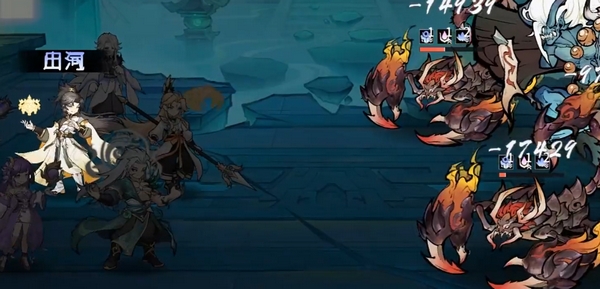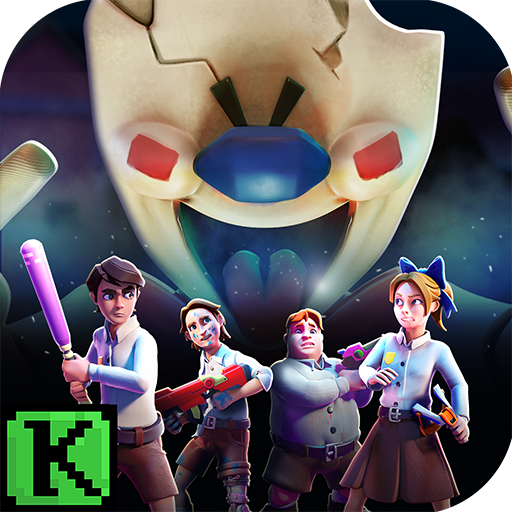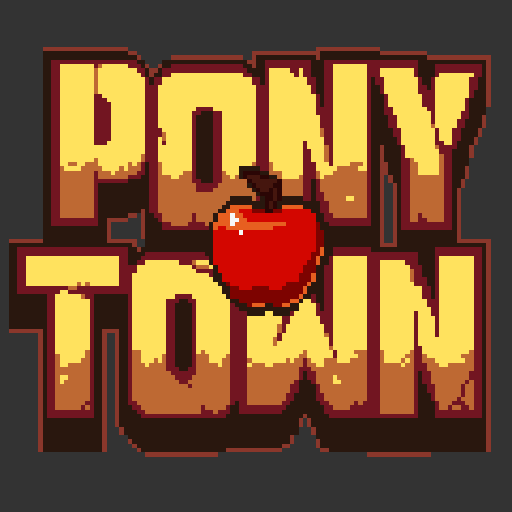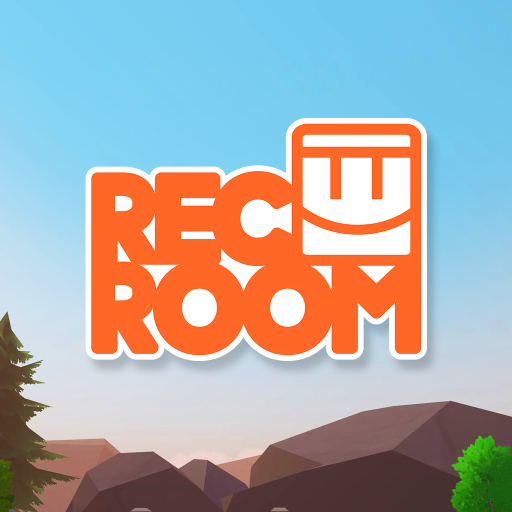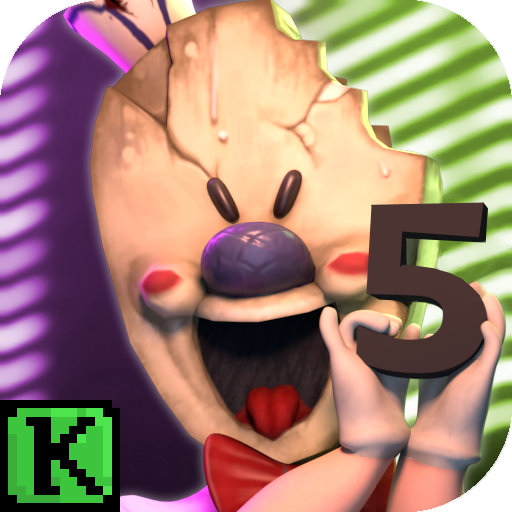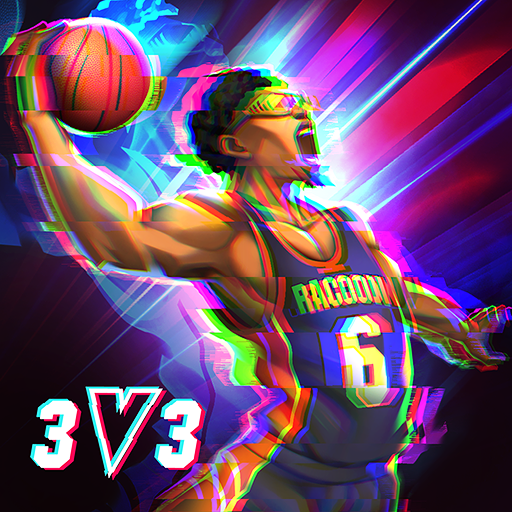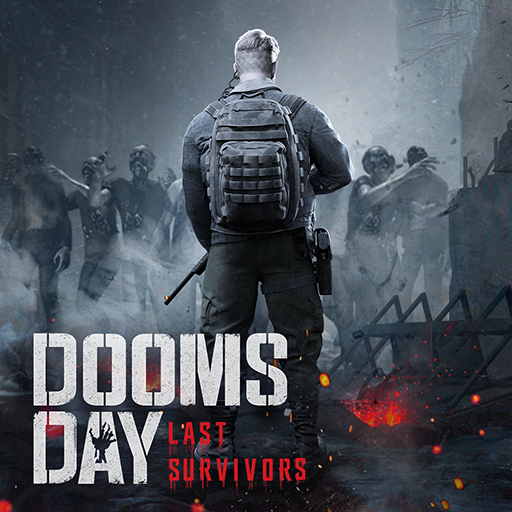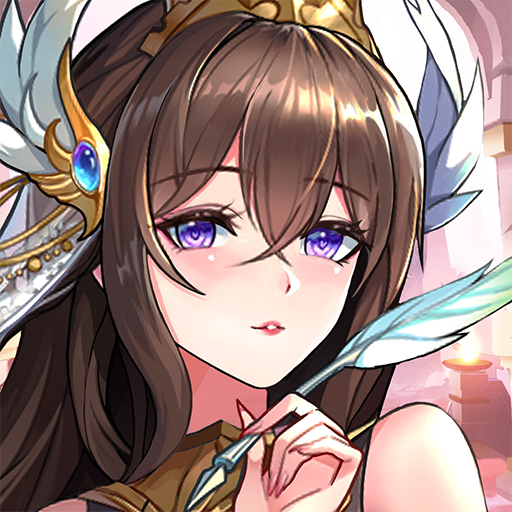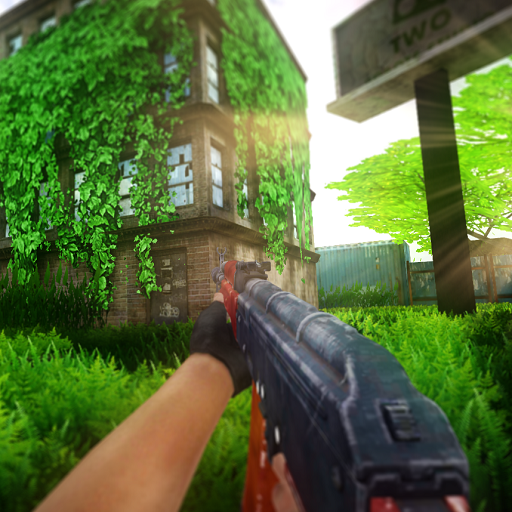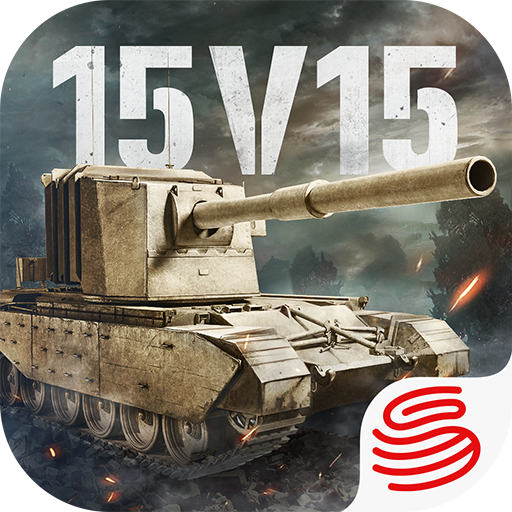
CarX Street
Game Introduction

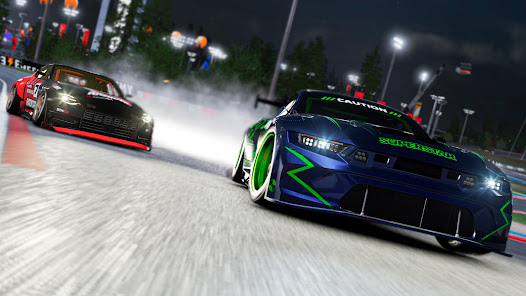

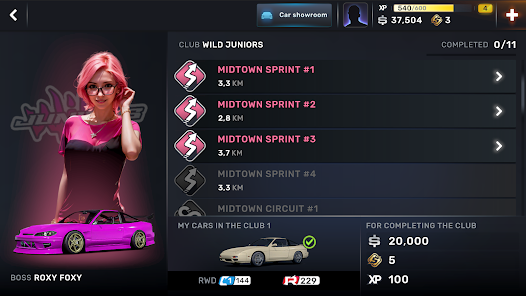

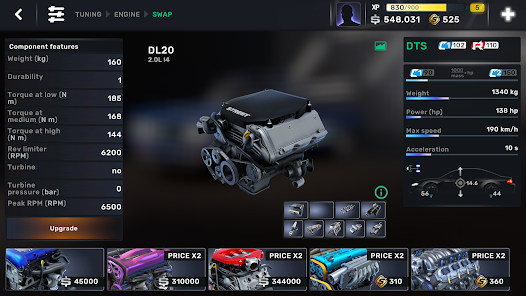
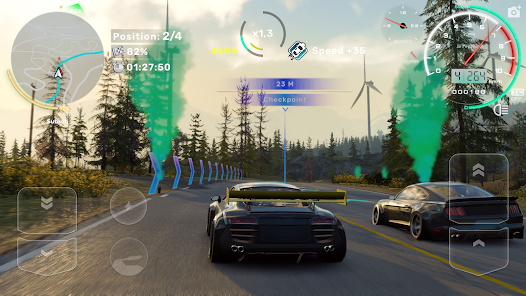


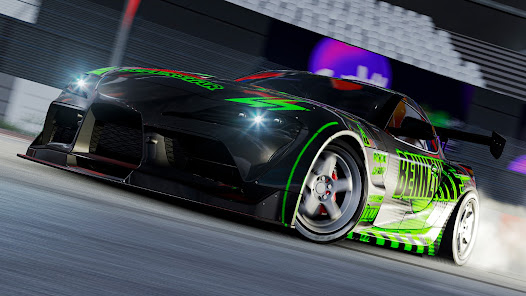
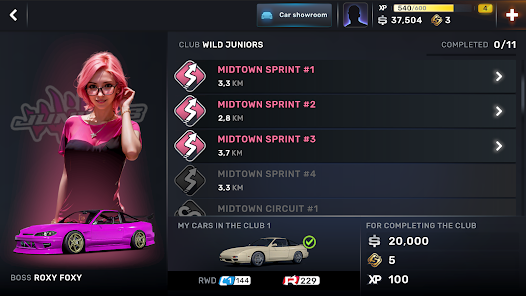

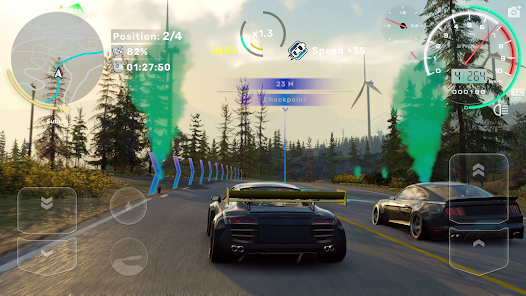


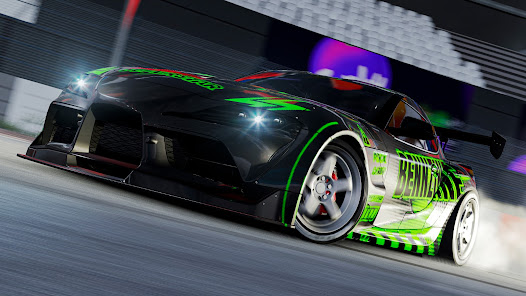


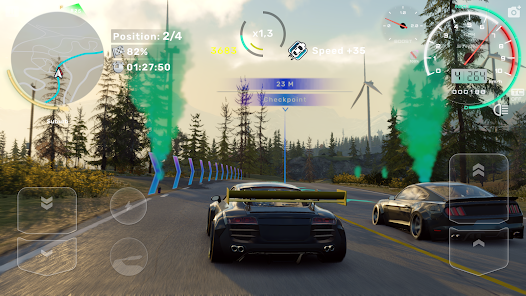
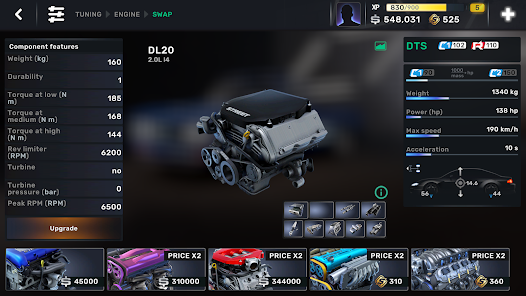
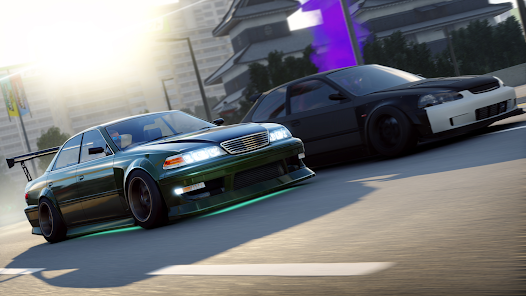
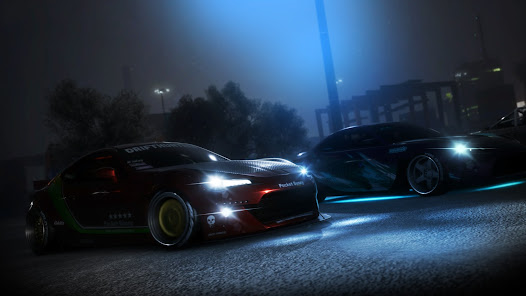

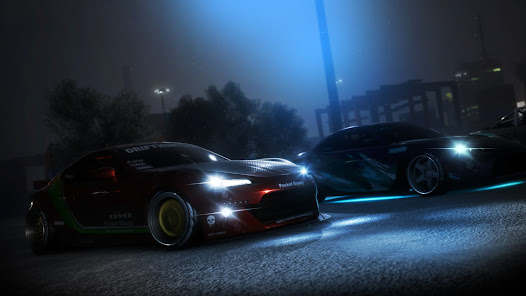


Hot Strategy
Guide to Drawing Cards in Huaxia Qianqiu: How to Draw Cards in Huaxia Qianqiu
The mobile version of China's Millennium has also opened card pools for players to draw from, allowing everyone to obtain different martial arts through the in-game card pool, enabling characters to use more moves in battle. So, how do you draw cards in China's Millennium? The guide for drawing cards in China's Millennium has been prepared for everyone, and after reading this guide, you will have a deeper understanding of the game's card pool mechanism and drawing card gameplay.
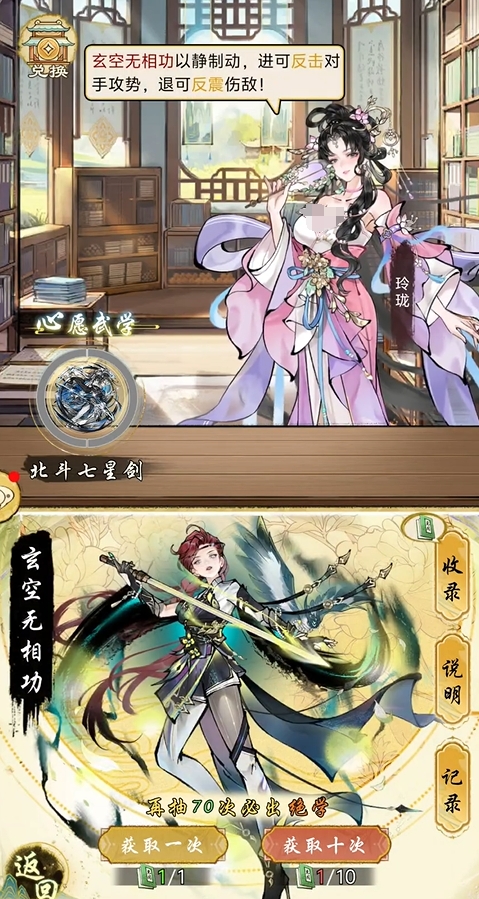
People need to advance the main storyline to the Ten Thousand Books Pavilion before they can unlock the card-drawing feature. Drawing cards in the game allows everyone to acquire martial arts of different qualities, with each type of martial art consisting of multiple different moves. Players only consider that they have mastered the attack and defense routines of a particular martial art when they have collected all 5 attack moves or 5 defense moves under the same name. In addition, each martial art has 10 different internal skills, so the cost of completely collecting a set of martial arts through card draws is relatively high. Fortunately, the game has a guaranteed mechanism, and players can set their desired martial arts through wishes, making the process of collecting a full set of martial arts not particularly troublesome.
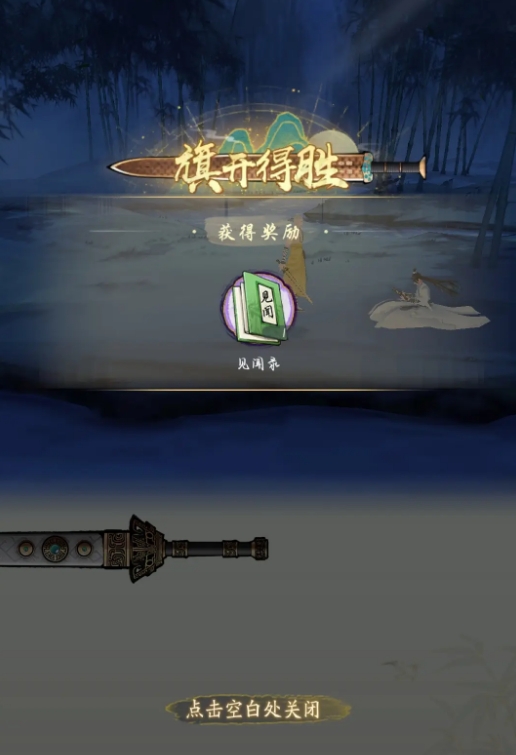
The item needed for drawing cards is called "Chronicles," which can be obtained through the main storyline, encounters, some battles, and time-limited events. The number of Chronicles that can be obtained in the game is relatively small, but it also supports exchange using paid currency, and some packages will give players Chronicles as a gift upon purchase. When consuming Chronicles to draw cards, besides obtaining martial arts moves as rewards, there is also a chance to get various affinity items, insight pills of different qualities, and other by-products. Additionally, drawing cards accumulates points that can be used to exchange for some rarer items in the shop. The martial arts drawn can be immediately equipped on the character, and moves from different martial arts can also be mixed and matched. Players can adjust the desired martial arts moves in the external skills option, activate the acquired internal skills in the internal skills section, and adjust the internal skill setup according to their combat system.
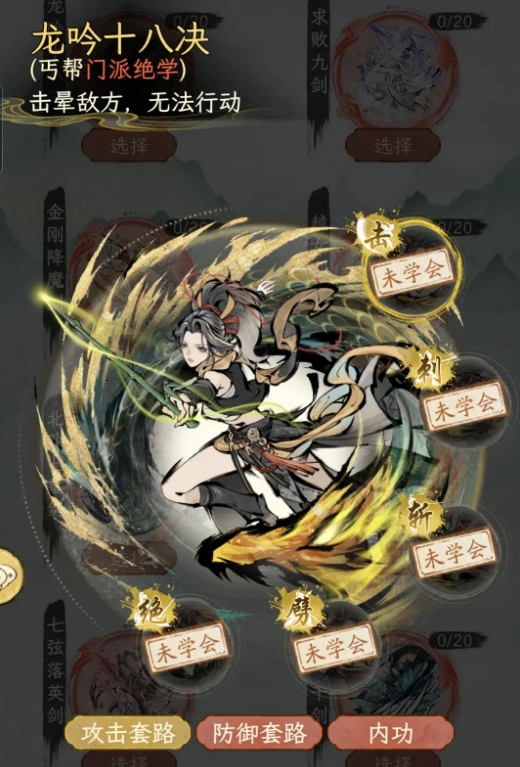
When people have a particular martial art they desire, they can increase the drop rate of that martial art by setting it as a wish, thereby reducing the cost of drawing that martial art. It should be noted that the wished-for martial art only takes effect after being set, so it is highly recommended that everyone completes the setting of the wished-for martial art immediately after unlocking the card-drawing feature. If a player is unsure which martial art in the game suits them better, they can try out all the martial arts in the trial, then decide which martial art to set as a wish. This way, they can also earn Chronicles from the trial, making it a win-win situation.
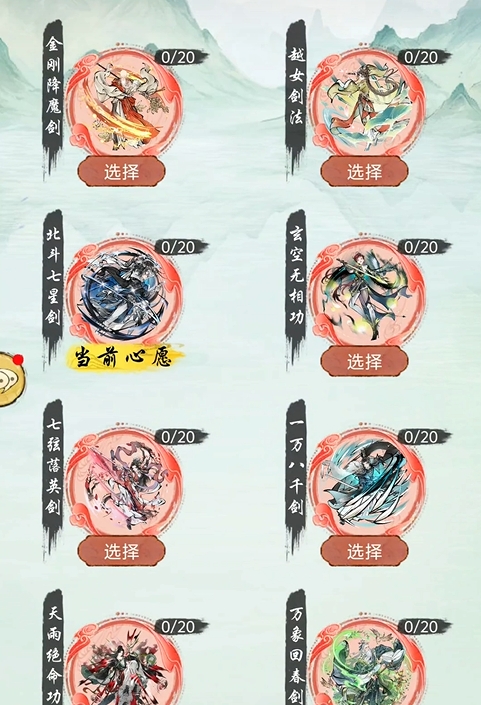
In summary, the card-drawing feature in China's Millennium is mainly about drawing martial arts moves. Only after drawing these moves can they be equipped on the character and used in battle. The guide for drawing cards in China's Millennium ends here, and please remember to use the wish function when drawing cards.
Is Flying Bird and Sea Street fun? Flying Bird and Sea Street review
Many players are quite fond of this healing simulation mobile game, where the art style and rich gameplay allow players to achieve an immersive experience. In this article, I mainly aim to introduce to players whether Feather & Sea Street is fun. If you're not very clear about this question, then the following explanation will be helpful. If you have any thoughts, please continue reading below, which can also make your gaming experience better.
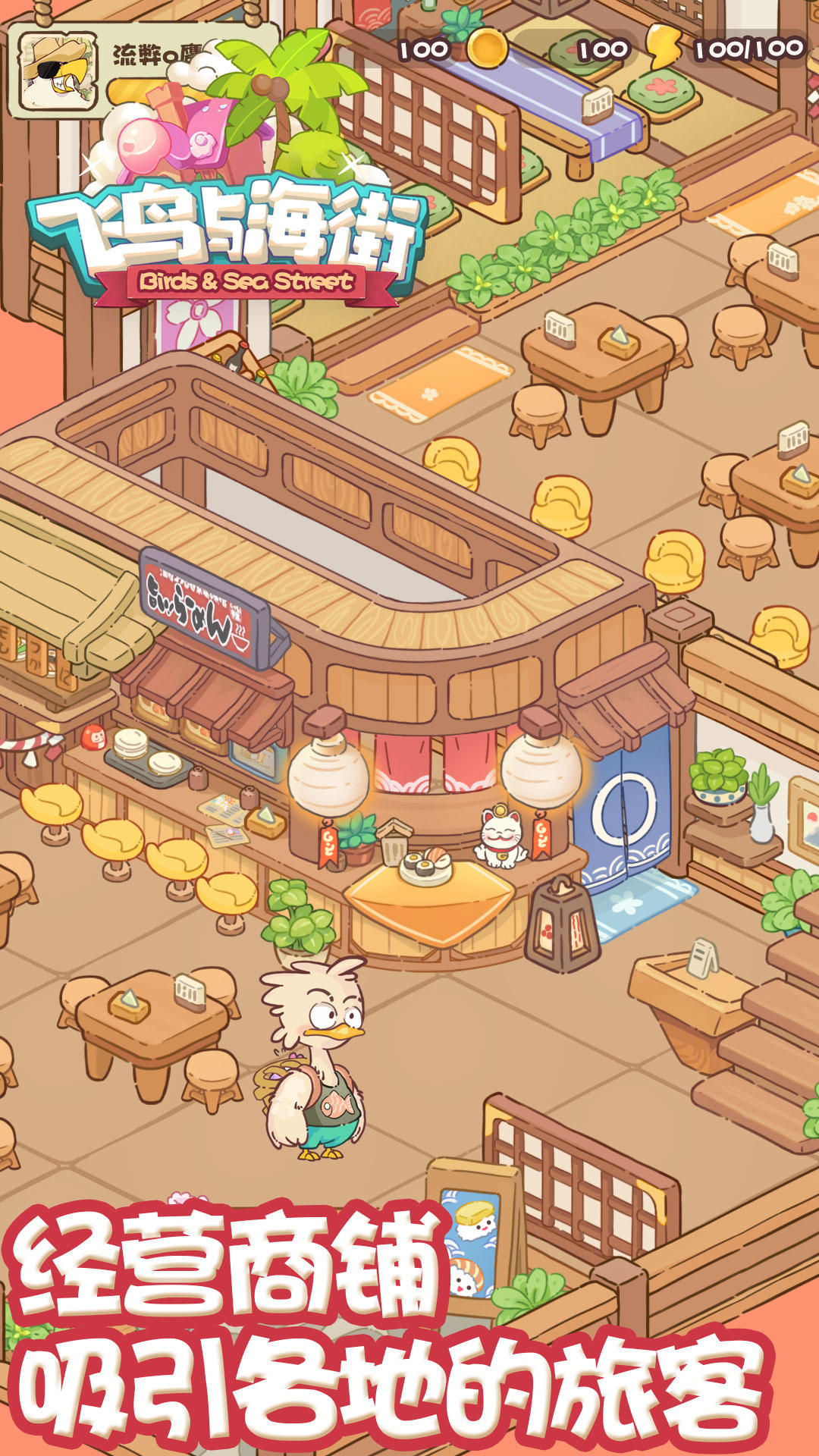
[Feather & Sea Street] Latest Version Reservation/Download Address
>>>>>#Feather & Sea Street#<<<<<<
The overall visuals in the game are pretty good, with the construction of the island town being particularly touching. There are even customizable commercial layouts, allowing players to open cafes and restaurants, as well as unlock many amusement facilities and boutiques. By making different choices and adjustments, players can increase their earnings.
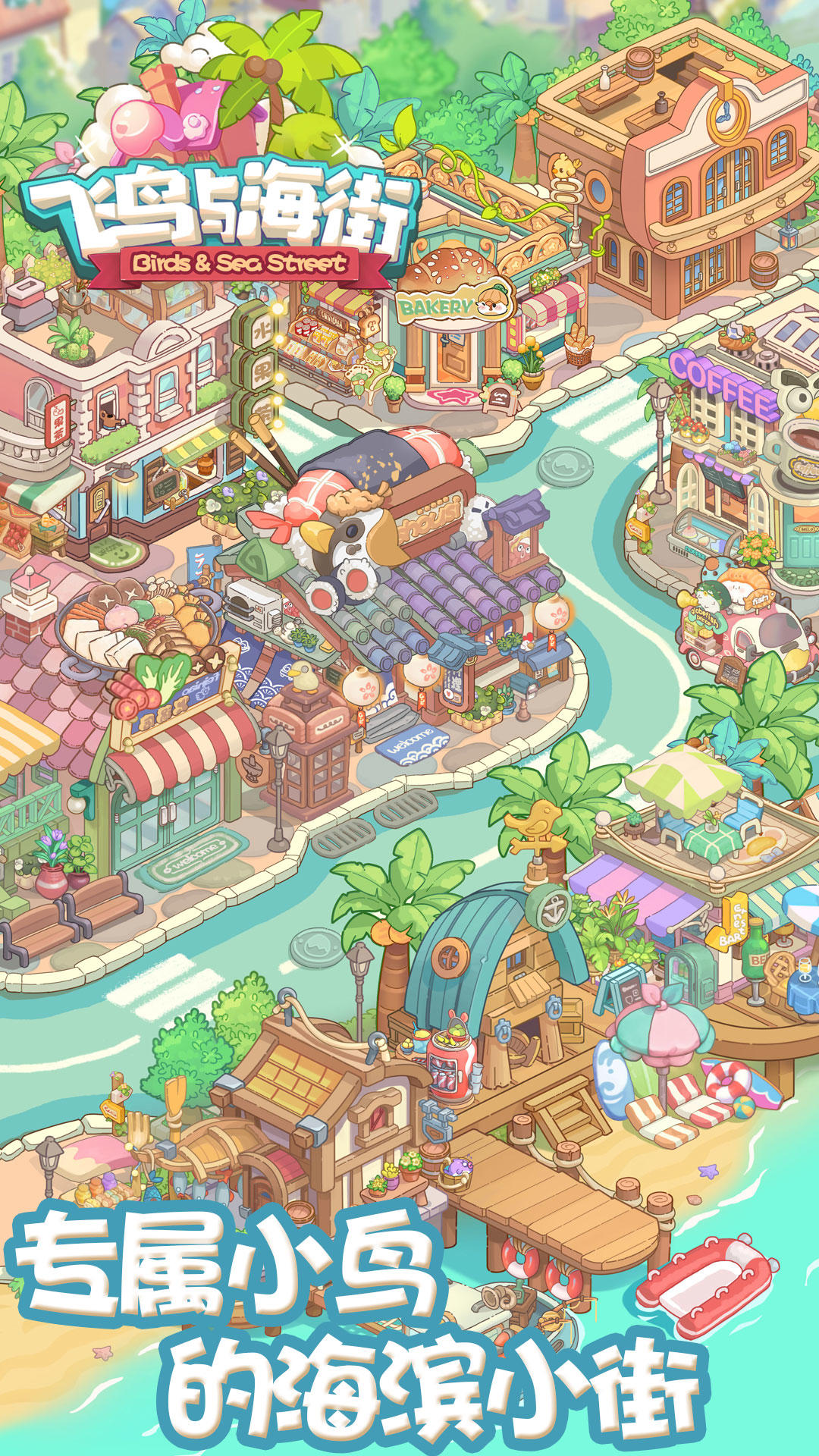
In addition to the diverse layouts, there are many challenges available, including setting up various events to boost income or participating in underwater exploration, among others. The main goal is to find precious ingredients or treasures through diving, providing more resources for the shop and increasing the diversity of the business experience.
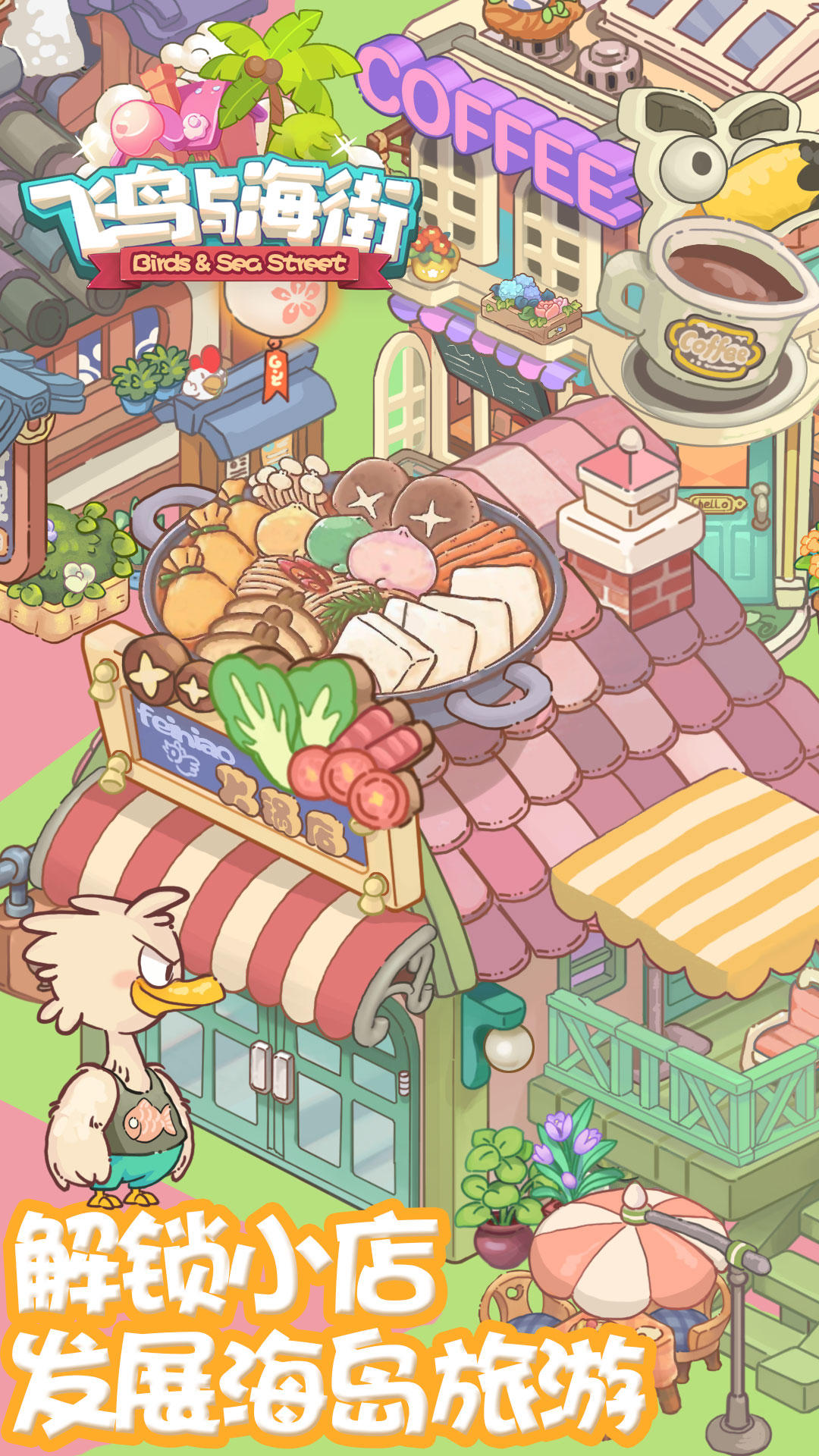
It's worth mentioning that as players continuously manage their small shops, they will eventually develop into popular tourist attractions, enhancing the player's experience. Especially when seeing the increase in the number of tourists, it can be more motivating. Overall, its playability is very high, allowing a wide range of friends to enjoy an immersive gaming experience.
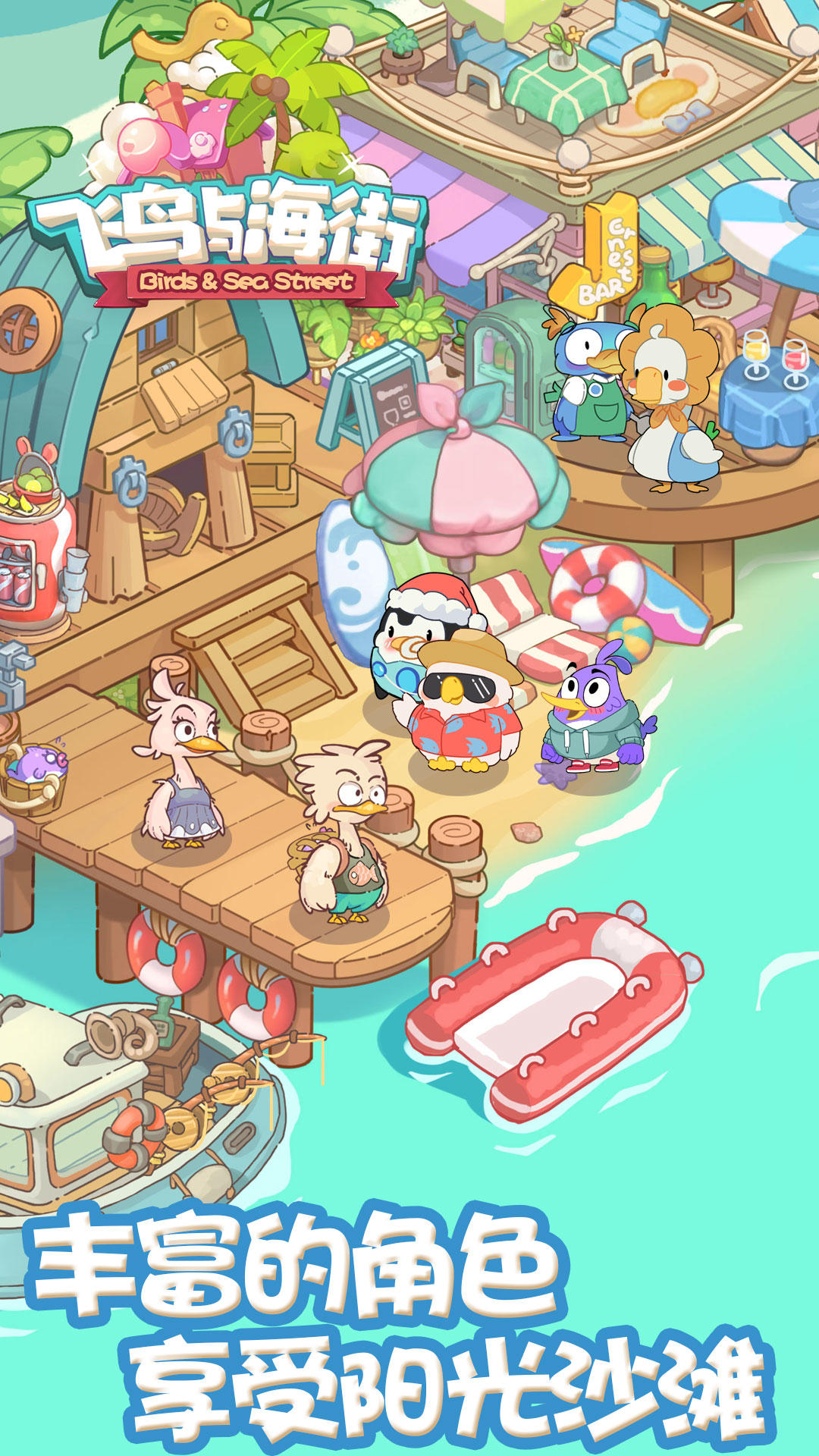
Well, that's all the explanation about whether Feather & Sea Street is fun. For all players, if you want to jump into the game as soon as it launches, just click the link in the text to reserve. This will ensure that players have a great gaming experience when the time comes.
When is the public beta for Birds and Sea Street? When will Birds and Sea Street be released?
In this simulation game, a rich set of strategic elements has been prepared for everyone, and its beautiful art style has also gained the love of many players. Today, we are mainly here to introduce the public test time of Birds and Sea Street to you all. If you are quite interested in this aspect and hope to have a good experience, the explanation below can provide help. If you have any thoughts, let's continue reading.

【Birds and Sea Street】Latest Version Reservation/Download Address
》》》》》#Birds and Sea Street#《《《《《
According to my understanding, this game is a simulation game that just recently obtained a license. Therefore, it will still take some time before it launches. Although there has not been an official announcement yet, the reservation channel has already been opened for everyone. You can now make a reservation through 9Games, ensuring that you can be among the first to dive into the game when it launches. Of course, you can also learn more about the specific gameplay within the reservation process.

The management and simulation elements in this game are very rich. Players can build various different shops, and there are numerous combinations of amusement facilities and food streets available, providing players with a great gaming experience.
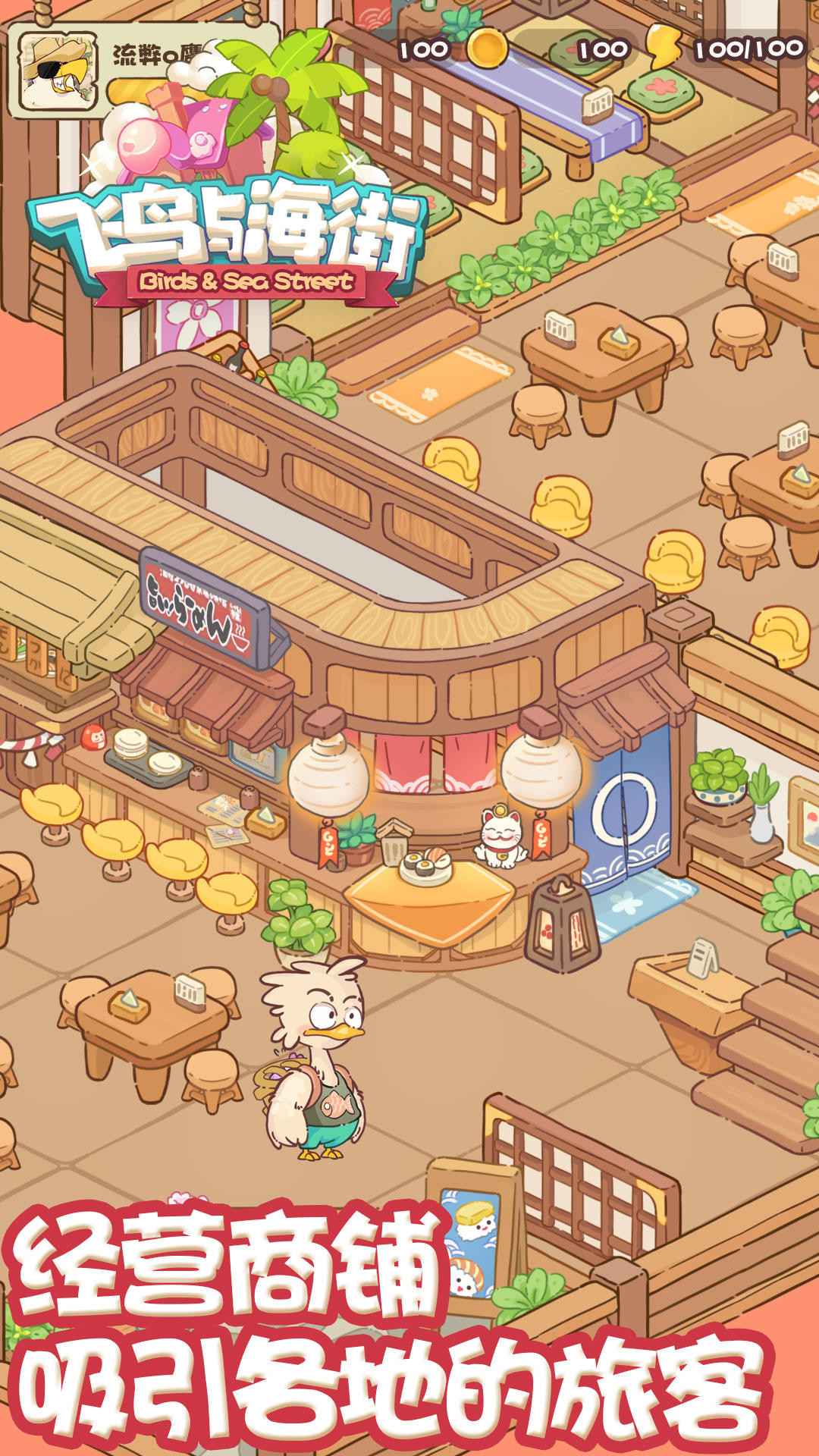
As the game progresses, players can unlock various decorations and product types. By planning and laying out their own designs, they can further increase their earnings, enhance the town's reputation, and even venture into the sea to explore, catching different types of fish and ingredients, providing strong support for the island's economic cycle.

Above is all the content regarding the public test time of Birds and Sea Street. For all the players, if you want to achieve better simulation management, you can quickly enter the game and experience it once it launches. Just click on the link above to make a reservation.
Who to Draw in Ither - A Guide to Drawing Cards in the Ither Mobile Game
Who to draw in Esher? The game has not yet entered the public testing phase, and many players are waiting to play directly when the public test starts. However, those who have not participated in previous tests may not be clear about the relevant plans for drawing cards, which characters are more worth prioritizing. Planning for card draws is quite important for newcomers, as it helps them better choose and plan their characters. The following guide on card drawing should be helpful for new players.
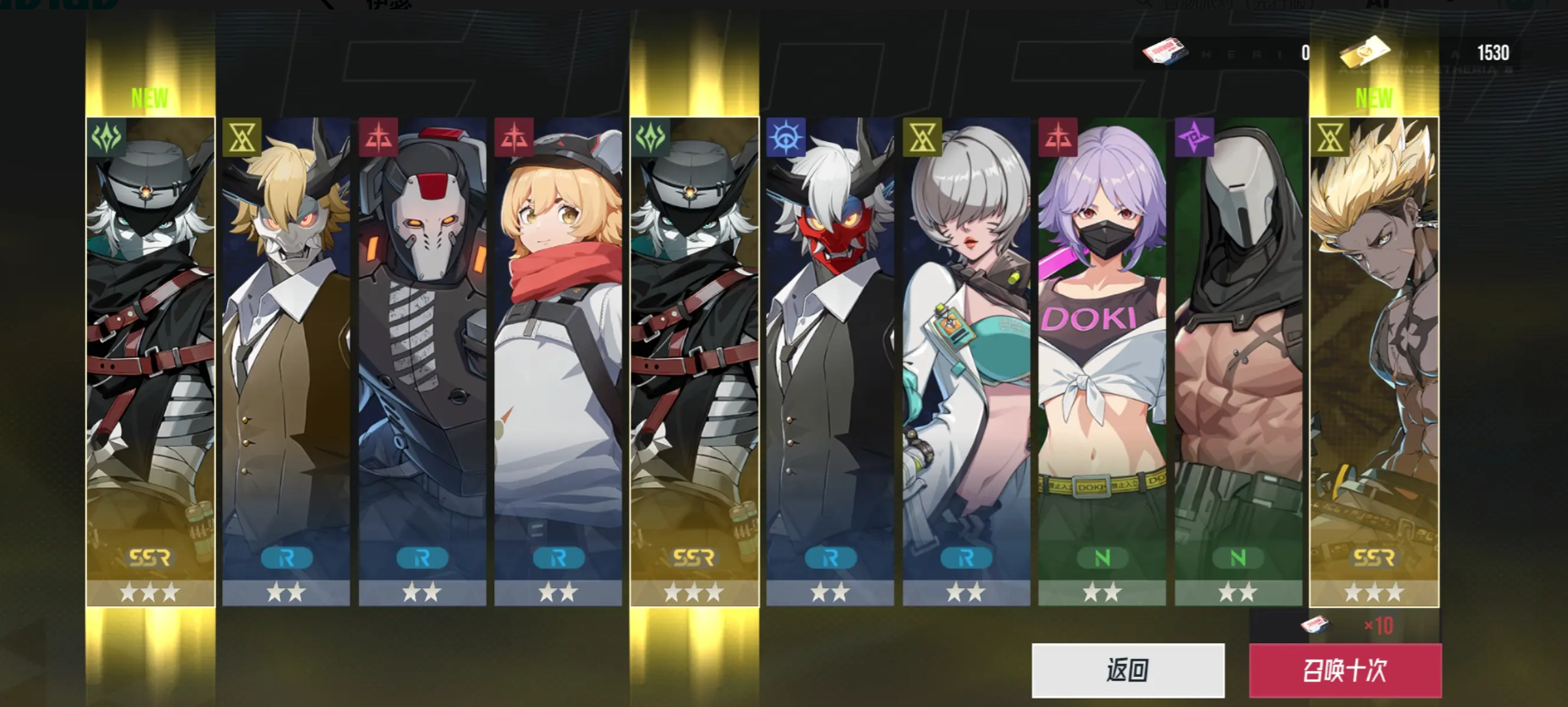
I. Gacha Pool Selection
Resources for gacha in the game are relatively easy to accumulate, especially in the early stages, where it's fairly simple to gather 300-400 draws. If you need to draw cards, without affecting your daily stamina purchases, it's recommended that you put as many resources as possible into the general pool and temporarily avoid the targeted pools (the self-selected three-color one with a 40-draw guarantee). The game's gacha pool design is quite user-friendly; there's a 25% chance of getting light or dark SSRs, and the acquisition rate of light/dark attribute SSRs is much higher than others, even for non-paying players. Some lucky players might even get 1-2 five-star light or dark characters. If you get Misaia and Miao at the beginning, you'll have no major problems with the initial stages. Therefore, Misaia and Miao are highly recommended in the general pool.
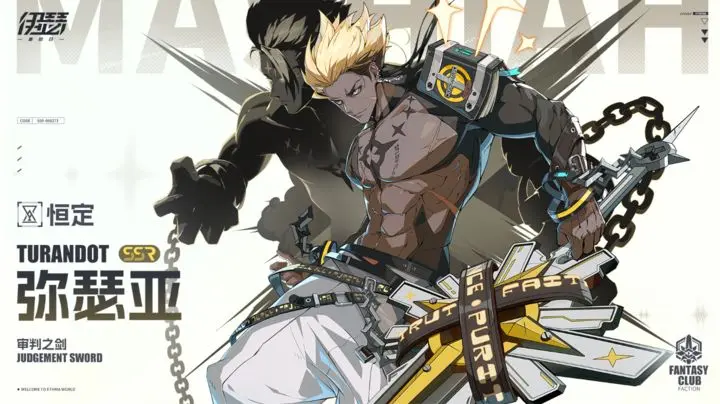
II. Targeted Pool Selection
For targeted gacha, you should choose based on your own needs. For example, if your current team lacks damage dealers, Tumi is highly recommended. She is an anomaly-type character whose normal attack deals 3 hits of 70% damage to a single enemy, with the final hit having a critical strike, and a 50% chance to push back the opponent's action progress by 10%. Her passive adds a "Blade Heart Flower" effect for 2 turns to any target that hasn't received it whenever she scores a critical hit. Her ultimate first gives all teammates a 2-turn crit rate boost, then deals 3 hits of 120% attack damage to all enemies, with a 40% chance to apply a 2-turn speed reduction upon a critical hit. With excellent crit and speed stats, she excels in PvP kill teams and in Aurora dungeons, making her versatile in various situations.
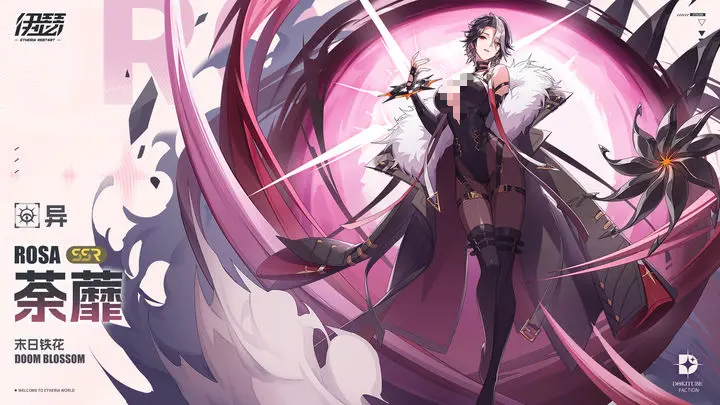
If your lineup lacks damage output or core burst support, then go for Bianting. This character has good attack power and can provide crit damage buffs, combining movement, resurrection, and attack bar increase, making her extremely functional. Her normal attack deals 200% damage to a single target and increases the action progress of the ally with the lowest progress by 10%. Her small skill allows an ally to act immediately, reduces skill cooldown, resurrects dead allies with 50% max HP, and reduces personal damage taken, making it a very crucial skill. Her ultimate also boosts the attack and crit damage of teammates, making her highly versatile.
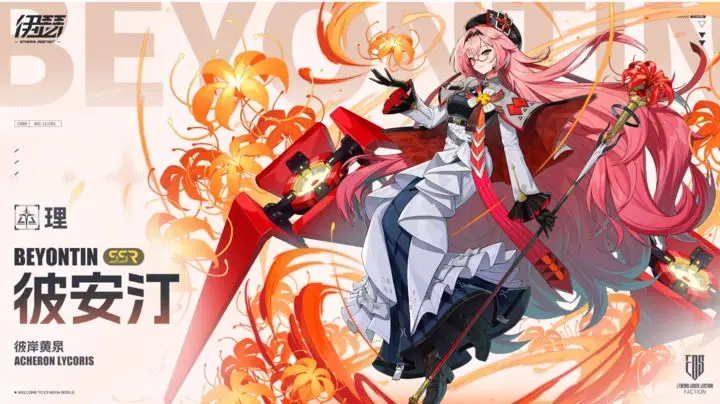
For long-term development, Mia is the top choice. In the highest difficulty dungeons, there's an immunity mechanism, so the team desperately needs a character to dispel debuffs first. Her healing and shield abilities also help a lot during the early stages against boss pressure. Lirumoqa, the strong little girl, is also a great choice. Her skills are basically tailored for speed runs. Skill 2 stuns and breaks the highest difficulty mechanics, plus splash damage; low-HP buff from Skill 2, passive that reduces CD after killing, makes her adaptable to various different stages.
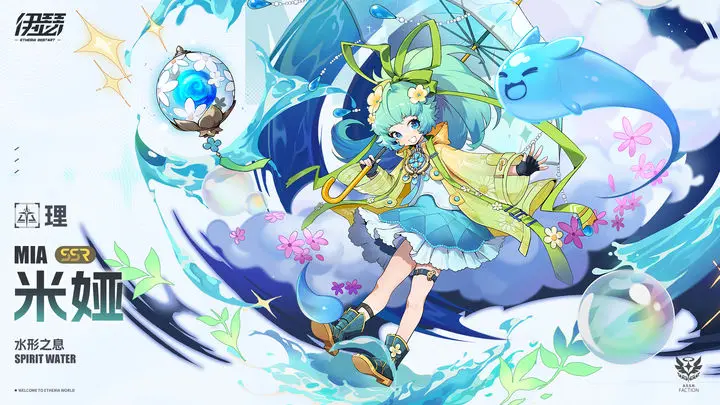
III. UP Pool Selection
Looking at the light and dark UPs, the most recommended is still Misaia, the big sword guy. He is a powerful damage dealer who ignores enemy defenses and combines single-target attacks, invincibility on kills, and other effects. His Skills 2 and 3 have only a 3-turn cooldown, making him almost flawless as a damage dealer, except for his high cost. If you have enough resources, he is the most recommended character to obtain, as he can participate in almost all battles, showcasing his versatility.
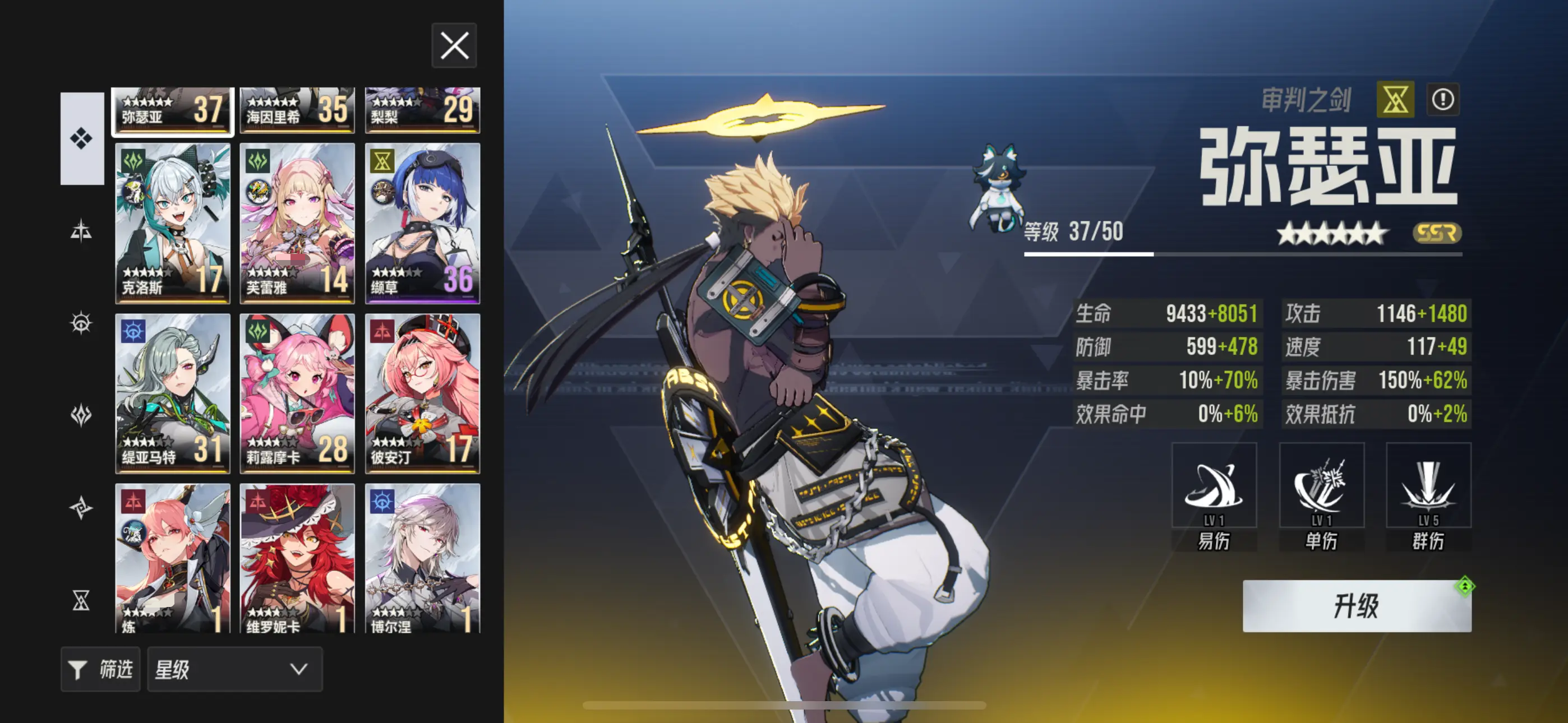
In the three-color UP pool, Freya is highly recommended. She is a pre-dispel type character, currently very effective in countering control teams in PvP, and she also provides a lifesteal buff, giving the team some sustainability. In high-difficulty dungeons, she is a stable support that is very much needed, making her well worth drawing.
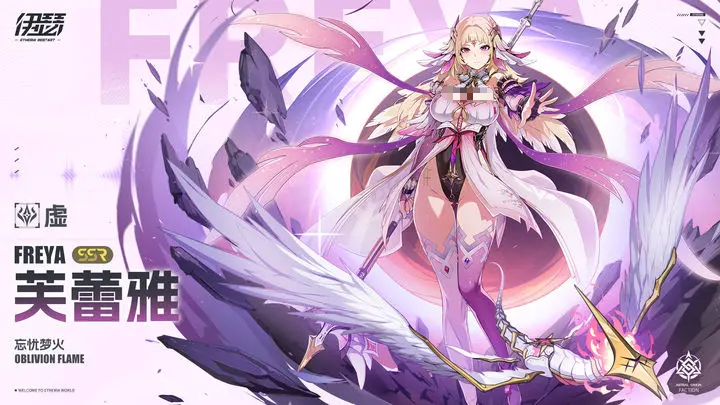
The suggestions for Esher card drawing end here. This article mainly focuses on SSR characters, but in the early stages, due to limited resources and the game's mechanics, many SR characters also perform well. If you haven't drawn any SSRs, you can use these SRs as a transition.
Naruto Konoha Expert Kakashi Hatake Strength Analysis Analysis of Kakashi Hatake's Character Strength
In the game Naruto: Leaf Village Elite, Kakashi is known for his titles as the First Technician of Konoha and the Copy Ninja. With the powerful abilities of his Sharingan, he masters thousands of ninja techniques, making his combat style flexible and versatile, thus becoming the top choice for many players. The strength of Kakashi in "Naruto: Leaf Village Elite" cannot be simply explained in one sentence, so if you want to use Kakashi, the following will provide a detailed analysis of his skills and usage strategies.
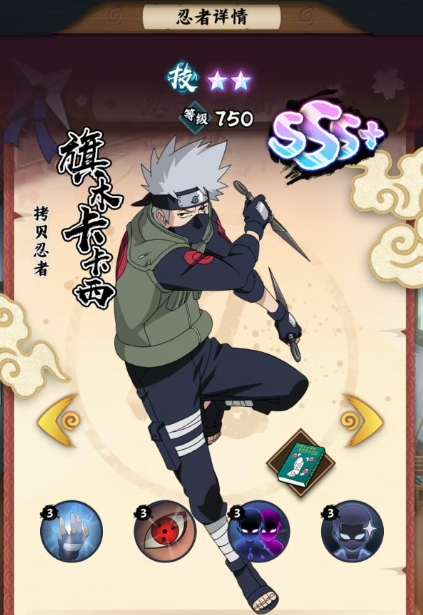
When using Kakashi's active ability, it can deal 470% attack damage to a random single target in the enemy's back row, with a chance to launch another attack on another random single target in the back row, dealing 100% attack damage. Here, the 470% damage coefficient makes Raikiri an effective means to ensure instant elimination of key enemy targets. Since it targets back row units, this is tactically very important because the back row typically consists of the enemy's main damage dealers and healers.
The skill's chain reaction mechanism is also quite evident. When the target is in a vulnerable state, it can trigger an additional attack opportunity, which not only increases the overall damage but also disrupts the enemy's formation, forcing them to readjust their positions to avoid concentrated fire. Of course, to maximize this feature, the team needs other members who can inflict the vulnerable status, such as Sasuke and Naruto, forming a good skill loop. First, a teammate marks the enemy with the vulnerable status, then Kakashi releases Raikiri, triggering a chain of attacks. As one of the powerful skills that can be used right from the start, Raikiri can help players quickly gain a numerical advantage at the beginning of the battle, especially when facing high-health enemies.
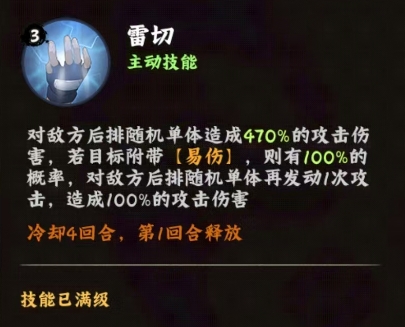
Then there is the passive skill Sharingan, which, when attacking enemy characters, provides a 25% bonus to the output value and has an 80% chance to add 1 layer of vulnerability. This can also achieve a good effect in increasing damage. Additionally, each attack gains a fixed percentage bonus, meaning that as the battle progresses, Kakashi's actual output will increase. This growth makes him perform well in prolonged battles. The setting of vulnerability enhances the overall team's output efficiency and can be used in conjunction with the above-mentioned active skills, reducing the reliance on teammates. Although the initial chance of successfully applying vulnerability is only 80%, in practice, through multiple attempts, the desired effect is almost always achieved. Furthermore, combining it with other control skills can increase the success rate.
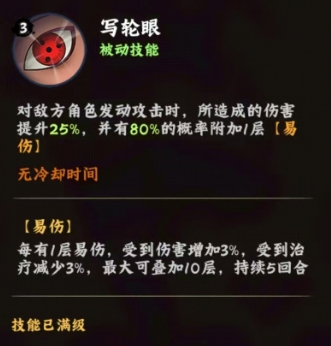
There is also the passive skill Copy Ninja, which, when Kakashi receives critical damage, has a 100% chance to reduce the damage of that critical hit by 40%. This skill significantly improves Kakashi's survivability, allowing him to maintain a certain amount of health even when hit by a fatal blow. For a front-line output and support role, this has a significant impact. When facing heroes who rely on one-hit kills with high damage, the characteristics of the Copy Ninja allow Kakashi to effectively resist such threats, ensuring he does not exit the battlefield too early.
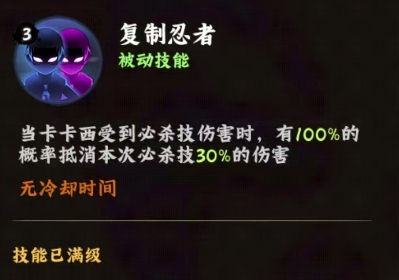
Opponents may hesitate before using their ultimate move, unsure whether to target Kakashi. This uncertainty helps protect other fragile units on our side from excessive attention. Therefore, in team battles, a member who can withstand a lot of damage without falling can bring tactical satisfaction to the entire team. The last passive skill, Determination to Win, increases attack by 20%, critical hit rate by 20%, and critical hit damage by 20% at the start of the battle.
The simultaneous increase in these three key attributes puts Kakashi in a favorable position from the beginning. Higher attack power means stronger suppression, and the increased critical hit chance and critical hit damage give him the opportunity to deal far more than conventional attack values. These buffs take effect at the start of the battle, so they can play a role at the earliest possible time. Whether in a quick decisive battle or a prolonged tug-of-war, the initial advantage provided by Determination to Win is very useful, especially when fighting against opponents of similar strength, where even small differences are crucial.
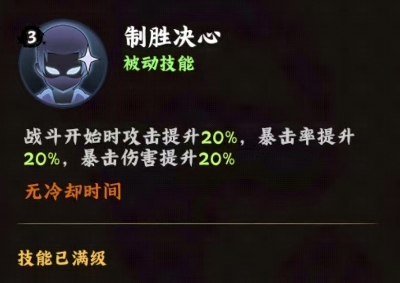
When his exclusive equipment, Icha Icha Paradise, is activated, it can increase the damage coefficient of Raikiri by 50%. After upgrading to +10, it can further increase the damage of normal attacks by 50%, with the normal attack target being the enemy with the lowest HP in the back row. At +20, the probability of Sharingan adding vulnerability increases to 100%, and the damage dealt increases to 35%. At +30, the damage of the second attack triggered by Raikiri increases by 250%. Each new reinforcement level brings an increase in strength to Kakashi, especially in the later stages, where the numerical benefits of highly reinforced equipment are no less than those of character level-ups.

From the above analysis, you should now be familiar with the strength of Kakashi in "Naruto: Leaf Village Elite." The design of his skills not only maximizes individual capabilities but also emphasizes the importance of teamwork. For new players, he is an ideal choice for the early stages of the game.
Ither Card Drawing Guide How to Play Ither Card Drawing
The Ither Gacha system is the core method for obtaining powerful variants, and reasonable planning of resources and gacha pool selection directly affects the strength of your team. The game offers various types of gacha pools, including targeted beginner pools, limited pools, and permanent pools, with significant differences in their guaranteed mechanisms and priorities. For beginners, it can indeed be confusing to know how to draw and choose. Here’s a practical gacha guide to help you efficiently accumulate the core of your lineup.
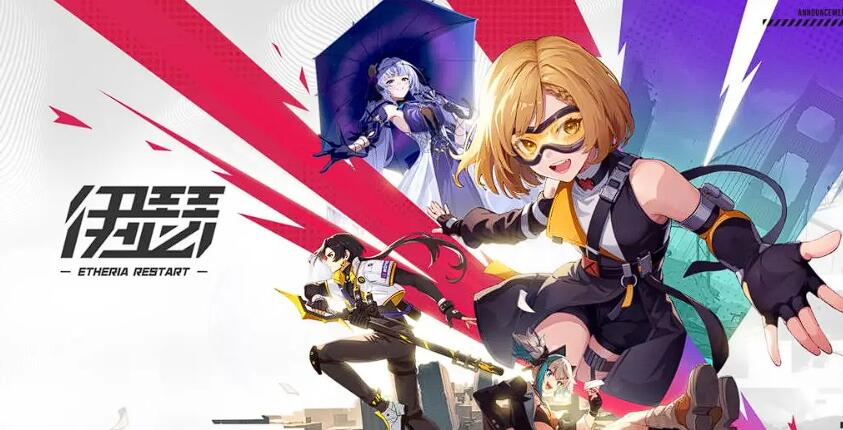
During the beginner phase, gacha resources should be concentrated on the targeted beginner pool. This pool provides a 40-draw guaranteed SSR selection opportunity. From a starting perspective, it's recommended to choose Tiamat or Veronica—the former has both AOE damage and survivability, with the skill "Inferno" burning 3 enemies, while the latter's "Ice Barrier" can absorb damage for the entire team. Both can complement the healer SSR Ling Luo given as part of the seven-day commission. Note that the beginner pool can only be participated in once, and after completion, the characters will be sent directly via pigeon mail, so there's no need to worry about being intercepted by NPCs. Additionally, logging in on the first day grants a 10-draw ticket, and combined with the 40 draws from the seven-day login, the first 50 draws can stably form a "DPS + Healer" basic lineup, significantly reducing the difficulty of early stages.

In the mid-game, the priority of gacha pools should be ranked as "Limited Pool > Guaranteed Pool > Permanent Pool." The guaranteed mechanism for event characters in the Limited Pool is 80 draws, such as the Kross pool, which provides group armor break and independent damage increase, with the skill "Dark Blade Assault" stealing 20% of the enemy's attack power, making him the top support in the current version. The Guaranteed Pool, although having a 100-draw guarantee, generally has lower character strength compared to the Limited Pool. In terms of resource allocation, players can exchange for 3 draws weekly from the Association Store and 2 draws from the Arena Store, plus daily tasks and event rewards, allowing zero-spend players to accumulate 50-60 draws per month. It's suggested to prioritize the Kross pool. It's worth noting that the guaranteed draw count in the Limited Pool carries over to the next similar event—if you don't reach 80 draws in the current period, they can be carried over to the next, but avoid the "Extreme Phase Summon Pool," which randomly gives 5 SSRs at 80 draws, with much lower value than targeted UP pools.
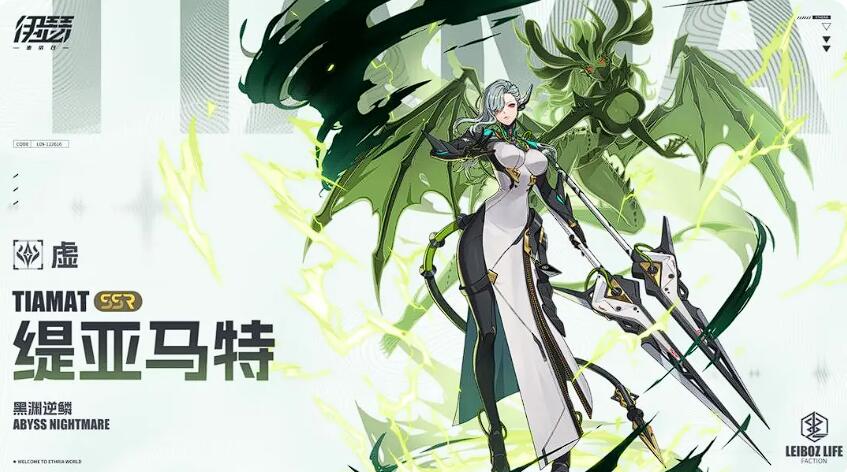
The acquisition and planning of gacha resources are long-term strategies. Completing "Sourcepoint Outpost" three times daily grants 1 draw, the first clear of each difficulty in "Shadow Pursuit" grants 5 draws, and each layer of "Melt Prohibition" grants 1 draw, totaling 20 draws. In terms of diamonds, each chapter of the main story rewards 1000 diamonds, the achievement system provides 5000 diamonds, and monthly card holders receive an additional 3000 diamonds (equivalent to 30 draws). It's recommended to use diamonds primarily for purchasing stamina (960 diamonds for 1000 stamina daily) to accelerate character development rather than directly drawing. For low-spending players, the beginner bundle (6 RMB = 10 draws) and monthly card are the most cost-effective investments, ensuring at least 60 draws in each limited pool, which, combined with free resources, can achieve the guaranteed draw.

Advanced gacha techniques can improve resource utilization. Drawing at night can slightly increase the chance of getting good results, and using the “Ten-Draw + Single Draw” method can trigger the probability UP mechanism. When gathering intelligence, buying two pieces of information (target item + any miscellaneous item) guarantees 100% real coordinates, avoiding false leads. If the UP character in the Limited Pool is a version T0 (such as Miaser), consider "well" exchanging—300 draws for a specific character, ensuring team strength.
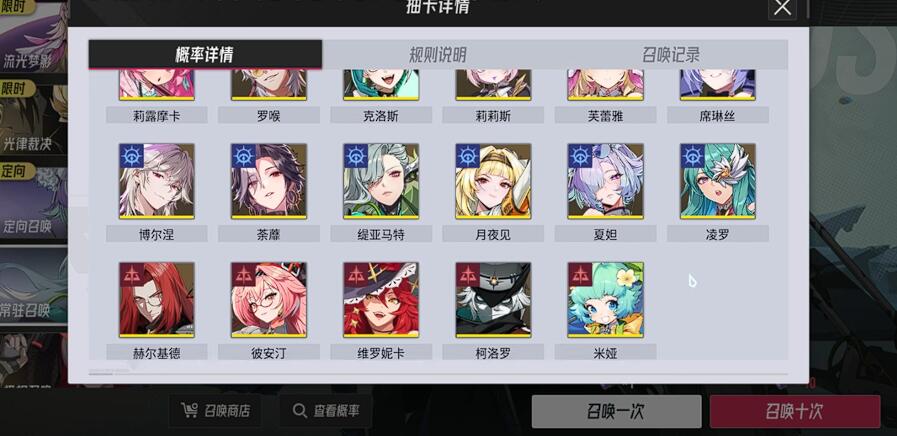
Ultimately, gacha serves the purpose of building your lineup. During the beginner phase, focus on Tiamat + Ling Luo + Gray (SR support) as the core, add Kross in the mid-game to enhance armor-breaking efficiency, and complete Miaser's damage-increasing system in the late game. As the game updates, regularly check official announcements to adjust strategies. With proper planning, even zero-spend players can collect mainstream strong characters within 3 months, easily handling various PVE challenges.
When is the public beta for Birds and Sea Street? When will Birds and Sea Street be released?
Today, I'm bringing you the content about the public testing time of "Birds and Sea Street", "Birds and Sea Street" centers on island management, where every aspect needs to be adjusted according to visitor needs and island characteristics. This guide focuses on the rational planning of initial store layouts, optimizing business strategies based on visitor feedback in the middle stages, enhancing the island's appeal through special events, and efficiently exploring marine resources to supplement business needs. It outlines key action directions for each stage. Let's take a closer look together.
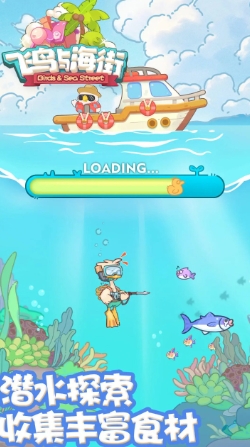
The latest reservation and download address for "Birds and Sea Street"
》》》》》#Birds and Sea Street#《《《《《
The public testing time for Birds and Sea Street has not been announced yet. Players interested in the game can make reservations via the Wandoujia APP. Players start their island management journey as seabird managers. The island is initially undeveloped, with basic terrains such as beaches, coconut groves, and reef areas. As the business progresses, areas like ports, markets, and seaside promenades are gradually unlocked. The character system includes a variety of island residents, each type of bird having unique habits and functions. Through daily interactions, players can increase their rapport with the islanders, unlocking exclusive cooperative skills. The core of the operation revolves around the construction of store clusters. Advanced stores include seaside restaurants capable of hosting small gatherings, attracting different types of visitors with varying styles.
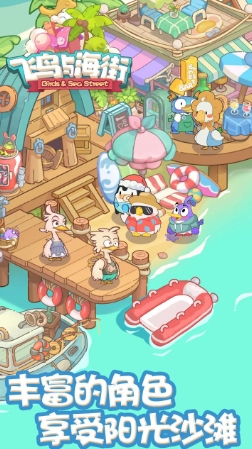
The activity system is divided by cycle and theme. Daily activities include morning markets and evening fishing meetings. Morning markets gather islanders and visitors to exchange goods, while evening fishing meetings can improve visitor satisfaction. Festival activities align with the season and island culture. In summer, a beach music festival is held, setting up temporary stages and inviting bird bands to perform, along with fluorescent sand painting interaction zones. In autumn, a harvest fishing festival is organized, featuring boat parades and seafood tasting. In winter, a warm winter market is hosted, offering hot drinks and handmade warm items for sale.
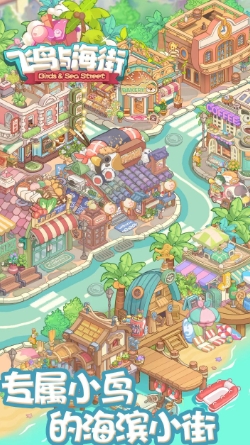
Exploration and interaction are spread throughout the island. Shells collected from the beach area can be used to make decorations. Deep in the coconut grove, there are puzzle-locked tree hole treasure chests. When the tide recedes in the reef area, a path to a small island is revealed, where viewing platforms and specialty shops can be built. When controlling the seabirds in flight, random events can also be triggered, such as guiding lost chicks back to their nests to earn gratitude from the islanders, or finding a message in a bottle to obtain mysterious blueprints. These interactions provide additional resources and plot clues for the operation. When exploring marine treasures and fishing, it's important to allocate time and energy reasonably, plan exploration routes, and prioritize areas rich in resources to increase the efficiency of obtaining treasures and fish.
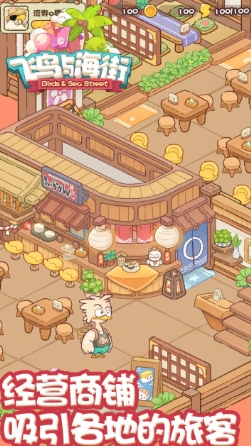
The content about the public testing time of Birds and Sea Street ends here, the advanced operation of Birds and Sea Street revolves around layout planning and demand adaptation. By establishing a solid foundation through scientific store layouts, adjusting strategies based on visitor feedback to enhance revenue, and expanding development space through special events and marine exploration, these three aspects form a complete growth logic.
Is Flying Bird and Sea Street Fun? A Review of the Game Content of Flying Bird and Sea Street
This edition is going to share with you whether Seabirds and Sea Street is fun. This is a very childlike management game where each player can enter a cartoon world through the game, playing as a seabird in this relaxed island, feeling the free management. The game's setting is very relaxing and interesting. Players who enjoy cartoon management games can come and play as a seabird, building shops and managing the island here, making it more prosperous.

The latest reservation download address for "Seabirds and Sea Street"
》》》》》#Seabirds and Sea Street#《《《《《
In the game Seabirds and Sea Street, players can become a seabird, developing the economy of the seaside island from this unique animal perspective. To achieve this goal, stores need to be built on the island, which can be set up as various different business categories. Players need to set the decoration style according to the category and personally determine the layout of the store. This way, more tourists coming to the island can experience a cozy and pleasant coffee shop or buy all kinds of swimwear at the clothing stores on the island. By reasonably arranging and accurately pricing, players can create a characteristic commercial street, attracting more visitors.
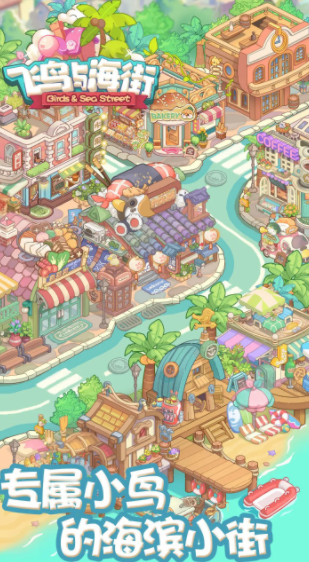
Besides running stores, this game also features daily exploration activities, allowing players to dive into the sea and explore the entire underwater world. Here, one can admire the beautiful scenery but also needs to avoid dangerous marine creatures. In the depths of the ocean, players have the opportunity to discover many precious treasures, which can be used to further upgrade the shops. Around the ocean, there are also many other marine creatures, and by interacting with them, players can make the entire ocean more united. After acquiring funds, materials can be purchased to build nests, providing a better living environment for other seabirds.
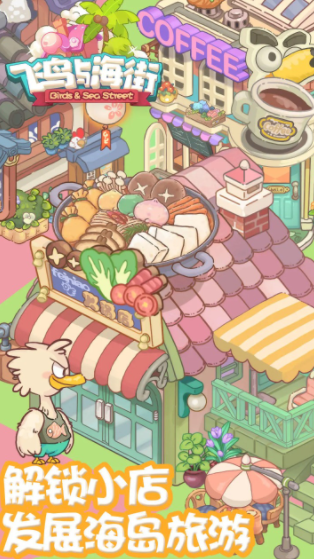
On this island, there are also numerous social interaction modes. Players can experience music festivals together with other members, interact along with the music, and during this process, they can also participate in fishing competitions, showcasing their fishing skills and gaining a sense of achievement. These residents on the island each have their own unique stories, which can be understood through communication, and side quests can be completed. The character customization system allows players to personalize their avatar, giving a more realistic immersion while enjoying the game.
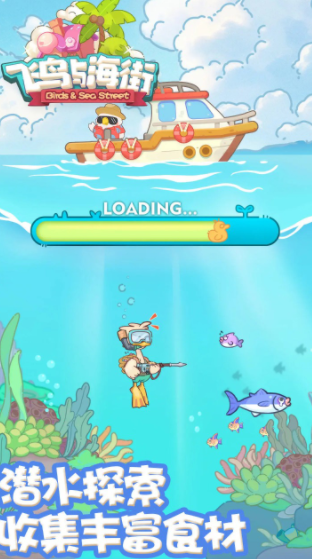
The above shares the game's settings. Regarding whether Seabirds and Sea Street is fun, I believe everyone has already made their judgment. Through this game, every player can feel the harmony of the marine ecosystem and gain a deeper understanding of the habits of these marine creatures. The game features a lot of island-style settings. If you want to relax, don't miss out on this game.
Introduction to the Limited-time Summoning Pet Card Pool Overview of the Limited-time Summoning Pet Card Pool Gameplay
Today, I will introduce the content of the limited card pool for the arrival of magical pets. In the cultivation system of magical pets, the limited card pool, as the core channel for obtaining rare magical pets, has a periodic opening and attribute-oriented mechanism that profoundly influences players' team building and game progress. Unlike the random drops in permanent card pools, the limited card pool provides players with a more strategic path to obtain magical pets through clear directions of magical pet output, wish setting functions, and time-limited opening rules. Let's take a look at it together.
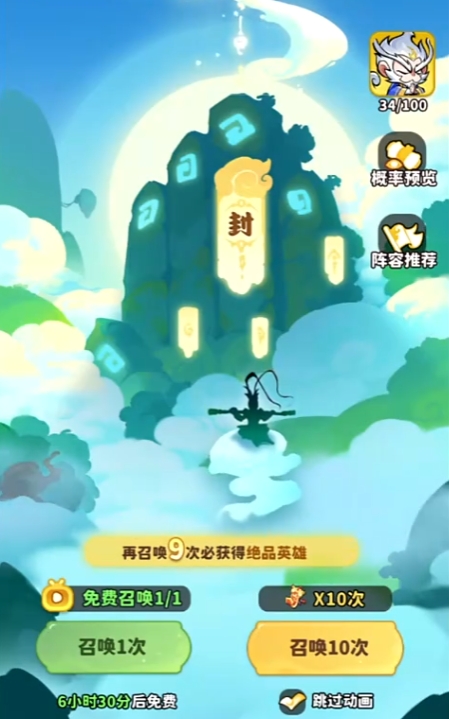
The limited card pool is not open long-term but rotates according to a specific cycle, each opening bringing new opportunities to draw magical pets. Players need to consume specific limited resources to draw from the limited card pool. These resources are usually obtained through in-game limited-time events, specific tasks, or by purchasing with paid currency in the store. During certain major holiday events, players can complete a series of designated tasks to get a certain number of limited draw tickets for drawing from the limited card pool. When drawing from the limited card pool, players have an extremely practical function to set their wish heroes, and the selection range for wish heroes covers both fairy-grade and supreme-grade magical pets.

The main limited card pools in the game include Return of the Great Sage, The Demon Child Descends, True Lord Manifests, and Destiny's Strange Affinity. They rotate in order. Each card pool is closely related to specific attribute magical pets in the game. The Return of the Great Sage card pool is often associated with physical-type magical pets, such as powerful physical-type fairy-grade magical pets like Sun Wukong and Bodhi Patriarch may appear in this card pool. The Demon Child Descends card pool tends toward fire-type magical pets, where strong fire-type magical pets like Nezha and Taiyi Zhenren have a chance to be drawn. The True Lord Manifests card pool mostly produces lightning-type magical pets, with high-output lightning-type magical pets like Yang Jian and San Shengmu possibly appearing in it. The Destiny's Strange Affinity card pool has a high probability of bringing water-type magical pets, with outstanding water-type magical pets like Ao Guang and Ao Run obtainable from it. This correspondence between attributes and card pools gives players a clear direction for drawing.
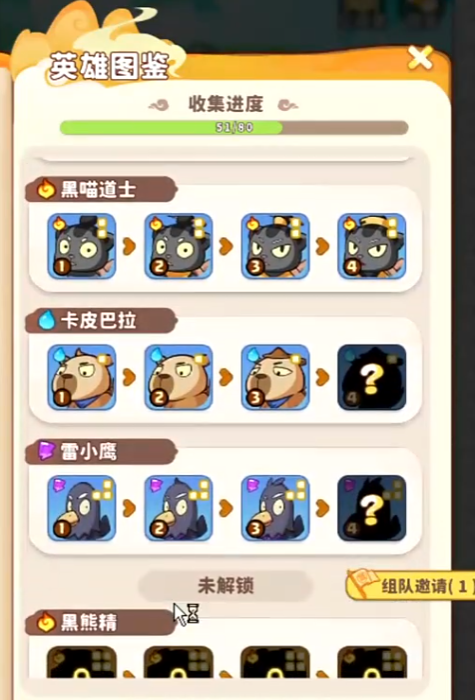
For players at the beginning of the game, if they encounter the Return of the Great Sage card pool during the server opening phase, drawing physical-type magical pets like Sun Wukong and Bodhi Patriarch has a significant advantage. Their powerful output capabilities can help players quickly increase their combat power in the early stages of the game, smoothly break through levels, and rapidly accumulate game resources. However, due to relatively limited resources, casual players can also choose to save resources and wait for subsequent card pools that better suit their game development pace. Players focusing on cultivating a water-type team can wait for the Destiny's Strange Affinity card pool to open and draw their desired water-type magical pets, avoiding excessive resource consumption in the early stages.
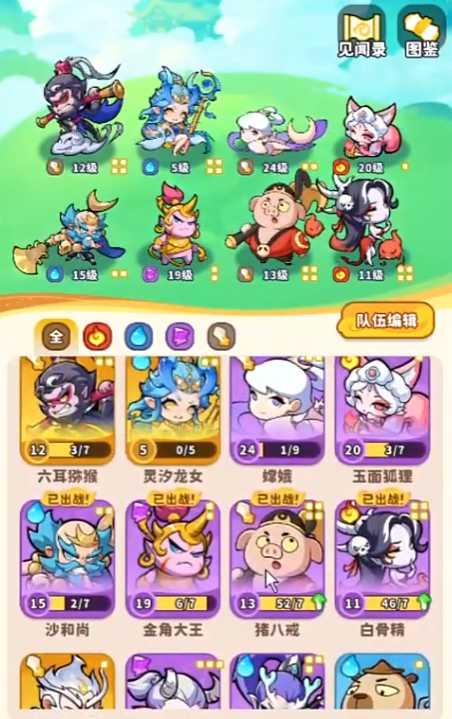
The introduction to the limited card pool for the arrival of magical pets is now complete. The limited card pool, with its unique gameplay, offers players valuable opportunities to obtain powerful magical pets and optimize their team lineup. Players need to pay close attention to the information about the card pool openings, plan their resources reasonably, and skillfully use mechanisms like the wish hero setting to successfully draw their desired magical pets from the limited card pool.
How to Draw Cards in the Permanent Pool of Under the Clear Sky and the Card Drawing Mechanism
In the game, if players want to obtain the characters they desire through gacha (card drawing), they should first understand the mechanism of card drawing. The Everlasting Pool is a type of gacha operation in the game, but how exactly does one draw cards, and what kind of mechanisms are there during the process? Today, I will share some content related to this with everyone.
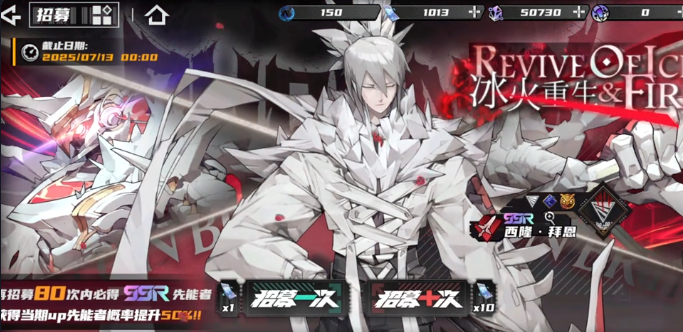
Currently, there are 4 gacha pools in the game, namely Art of Love, Regular Recruitment, Ice and Fire Rebirth, and Nova Recruitment. Players should have a basic understanding of the gameplay for these recruitments.

Ice and Fire Rebirth and Art of Love are actually limited gacha pools in the game. Nova Recruitment is the beginner's gacha pool, while Regular Recruitment is the permanent gacha pool that everyone talks about, and players should be aware of this. The game's gacha has a relatively simple guarantee system, where the guaranteed number of draws for the same type of recruitment gacha pool generally carries over.
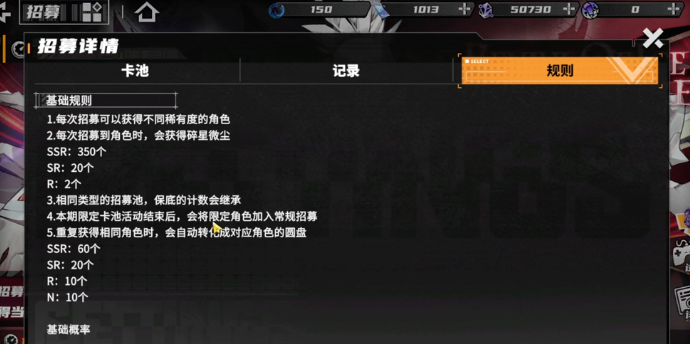
Therefore, regardless of where you recruit, the important thing is that after the gacha pool ends, all the limited characters can enter the regular recruitment. Players don't need to worry about these characters potentially becoming out of print. If you want to draw an SSR character, the success rate is around 1.5%, and with the guarantee system, it takes about 80 draws. This is not much different from other games, and players can try it out.
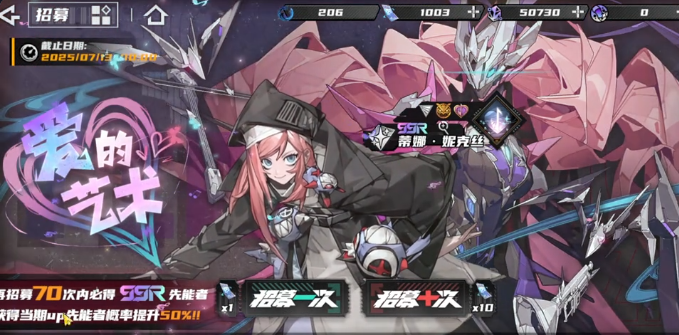
Above is the introduction on how to draw cards in the Everlasting Pool. During the gacha, there is a guarantee mechanism, so there aren't too many limitations, but players need to know that for the beginner's gacha pool, just 10 draws can meet their needs. For beginners, this experience is quite good.
Recommend
Strategy
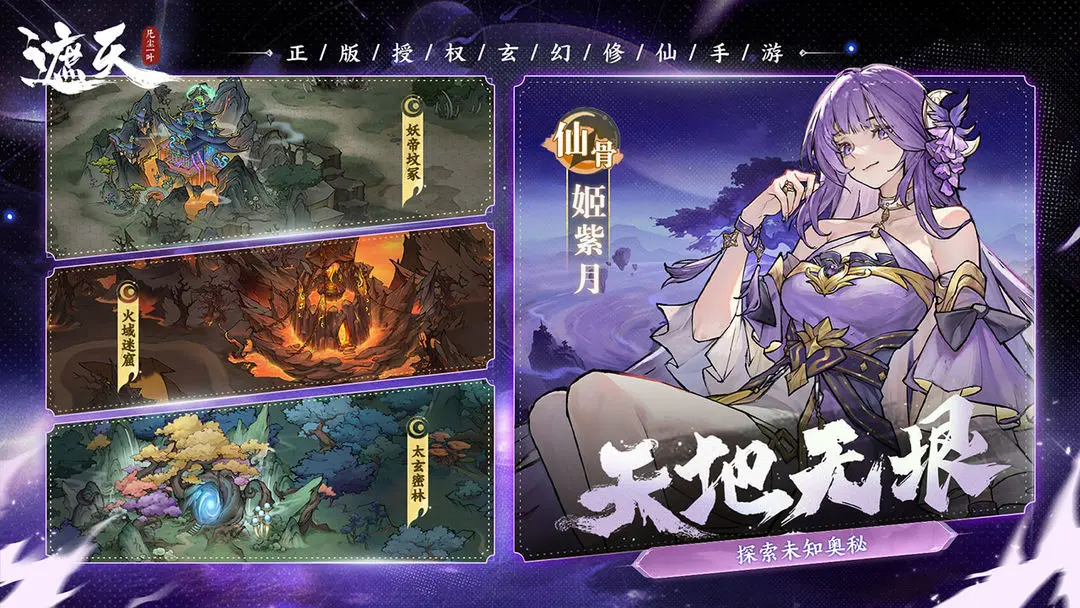
A Guide to Zhetian Fanchen Yiyue Sharing Tips for New Players on How to Play Zhetian Fanchen Yiyue
Introduction to the Public Beta Time of Zhetian Fanchen Yeyi When is the public beta for Zhetian Fanchen Yeyi?
How is Zi Yue from Zhetian Fanchen? Introduction to Zi Yue from Zhetian Fanchen
What are the Luhida Origin redemption codes? Sharing of Luhida Origin mobile game gift codes
Lu Xida Origin Team Recommendations Lu Xida Origin Team Guide
Lu Xida Origin Strategy Sharing: Beginner's Guide to Lu Xida Origin
